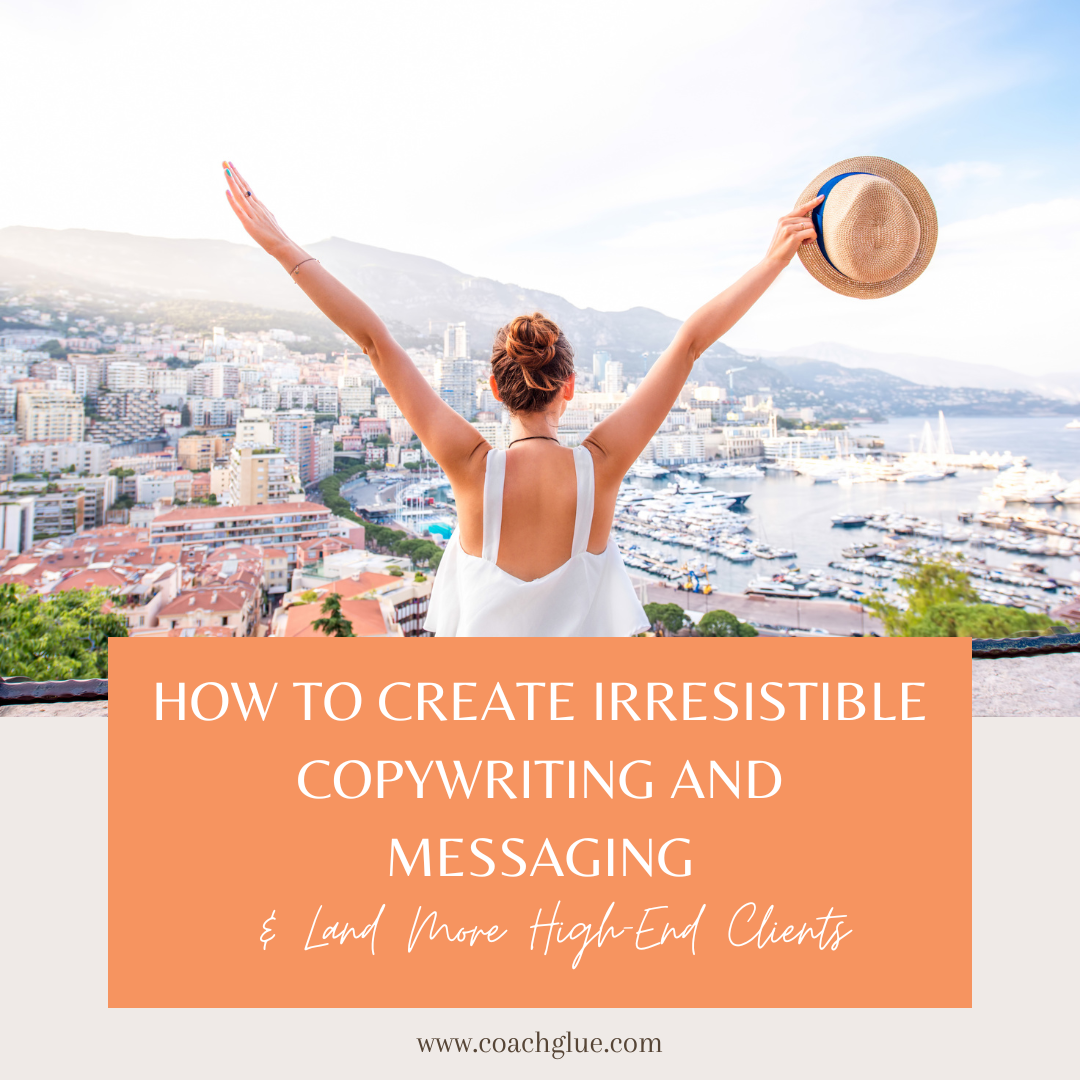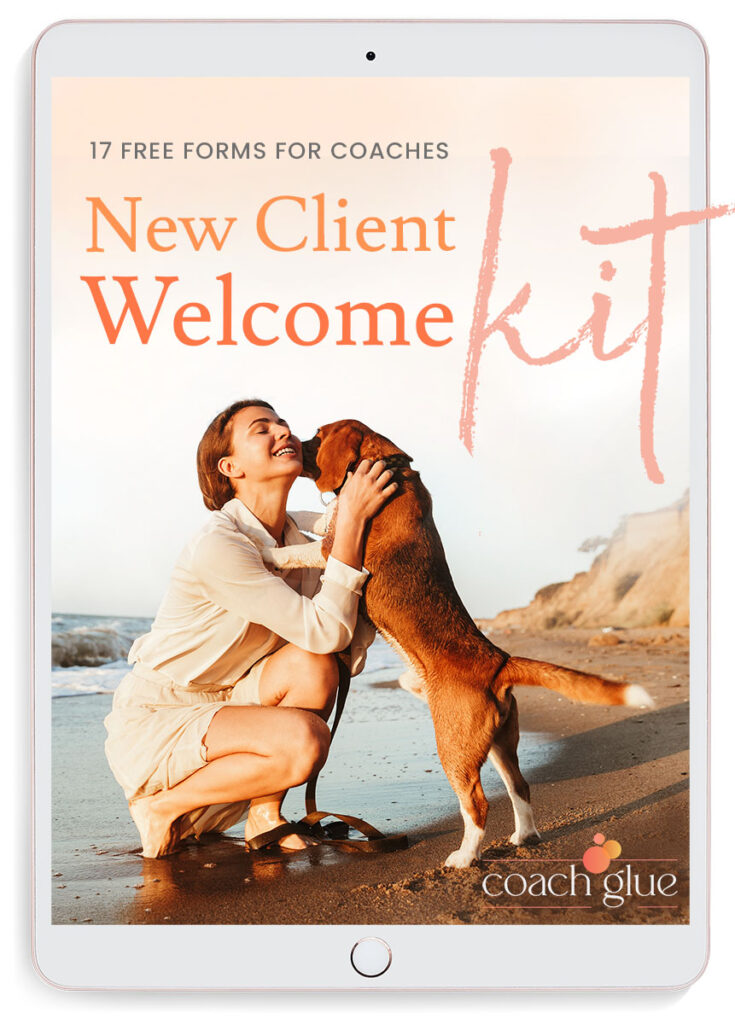Tell us if you’ve been there: You’ve just spent hours crafting the creme de la creme of social media posts launching your new services, excitedly press the “Post” button and…nada.
It’s disheartening, right?
While it’d be amazing if all we had to do was show up once, post on social media and have high-end, dreamy clients barreling into our DMs, it actually takes a bit more strategy to ‘hook’ high-end clients.
But before we dive into exactly how to use your copywriting and messaging to sign dreamy clients, let’s break down exactly what copywriting, messaging and high-end clients are.
Business owners sometimes confuse copywriting and messaging, and although they do go hand-in-hand, they aren’t quite the same.
In short, copywriting is the art & science of writing that influences people to take action, whether that’s buying your snazzy course, signing up for coaching services or adding their name to your email list.
Messaging, on the other hand, is the specific language you use to deliver your copy. It’s the literal words you use and the way you craft your sentences and phrases.
Both are important skills for any business owner who wants to grow their business and sign more clients.
As for high-end clients, definitions differ. Some coaches equate high-end clients with high-paying clients. On the other hand, we believe high-end clients are both clients who are willing to pay and clients who trust your expertise.
So, exactly how do you magnetize those types of clients through your copywriting and messaging? Here are our top 5 tips:
1) Understand Your (High-End) Audience
It seems obvious, but getting to know your specific high-end clients’ needs and desires is priority number one.
Because–let’s be honest–how can you write or create content for someone you don’t fully get?
Make sure you know who you’re trying to reach (aka their demographics), what pain points they’re experiencing and what they desire (and what that looks and sounds like for them). What drives them to take action? Fear of missing out? A desire for something better? What do they need from you? How can you help them solve their problems?
If you need help, research is your best friend. Use online resources, surveys, and informational interviews to learn as much as you can about them.
Once you have a good grasp on all the above, then you can start crafting messages that resonate and get them excited about your offers. You’ll not only have a much better idea what to say, but you’ll also have a better idea how to say it–because they’ve given you the exact language they use via surveys, etc.
2) Own Your Skills & Expertise
Like we mentioned, everybody defines high-end clients differently. But one thing (most) coaches can agree on is this: High-end, quality clients trust you. They don’t micro-manage, they don’t fight you at every turn and they definitely don’t pay their invoices late (or not at all).
Instead, they’re confident in you. They see the immense value you bring and they know you have unique insight, tools and techniques that can help them achieve their goals.
So, how exactly do you prove this to them before they pull out their credit cards? You own your brilliance and expertise in your marketing (read: copywriting & messaging). From social media to Reels to email sequences, don’t be afraid to showcase how much you know–and to brag on your clients’ results after working with you as well. This is all about building trust, so don’t be shy about doling out education, information and inspiration in your area of expertise. And don’t be shy about sharing specifically how you’ve helped overs achieve what they desire. Use testimonials and case studies with specific numbers, dates, dollar amounts and names (with permission, of course).
Boldly claim your expertise–and clients’ results–and watch as (the right) people begin to inquire about your services more and more.
3) Use Their Language–and Language That Inspires Them
Remember all that research you did into how your ideal clients talk about their problems and desires? This information will become invaluable as you’re writing copy and messaging.
When you write copy, use the language they use to describe their problems and desires–and keep in mind this might be different than how you might naturally talk about them.
On another note, there’s also a bit of debate about whether “high-end” clients respond as well to “pain point” marketing and messaging, which is the go-to standard in most marketing copy. (Most marketing copy focuses on making readers aware of their problems by bringing the problem to life and then agitating it.)
But there is an alternative that can sometimes yield surprisingly good results: You can also try focusing on painting a picture of their desires first. For example, instead of opening up a blog post with, “Struggling to sign clients?” you open with, “Imagine 100s of DMs from ideal clients waiting in your LinkedIn messages every morning.”
4) Be Authentic
Authenticity has become a major buzzword in the online coaching space, but the truth is, it does matter. Your target audience will be able to tell if your copywriting and messaging are authentic or not.
People are becoming much more sensitive to over-the-top marketing messages. Aspirational marketing is inspiring and fun–but keep it real, too. And make sure it’s true to you and what you can actually help others achieve.
5) Keep It Simple
Less is often more in the copy department. Don’t try to stuff too much information into your messages – instead, focus on delivering your message with as few words as possible (while still being descriptive and specific when it matters, of course).
Try running your marketing through a program like Grammarly to see what you can remove. How can you make it sharper, punchier, better overall?
Want your copy to sound polished and professional without wasting hours (or months) of your life pumping it out yourself? Check out CoachGlue’s VIP Club, where we offer professionally crafted courses, sales pages and even marketing emails–that you can then take, tweak and profit from. Click here to check out the VIP Club.






